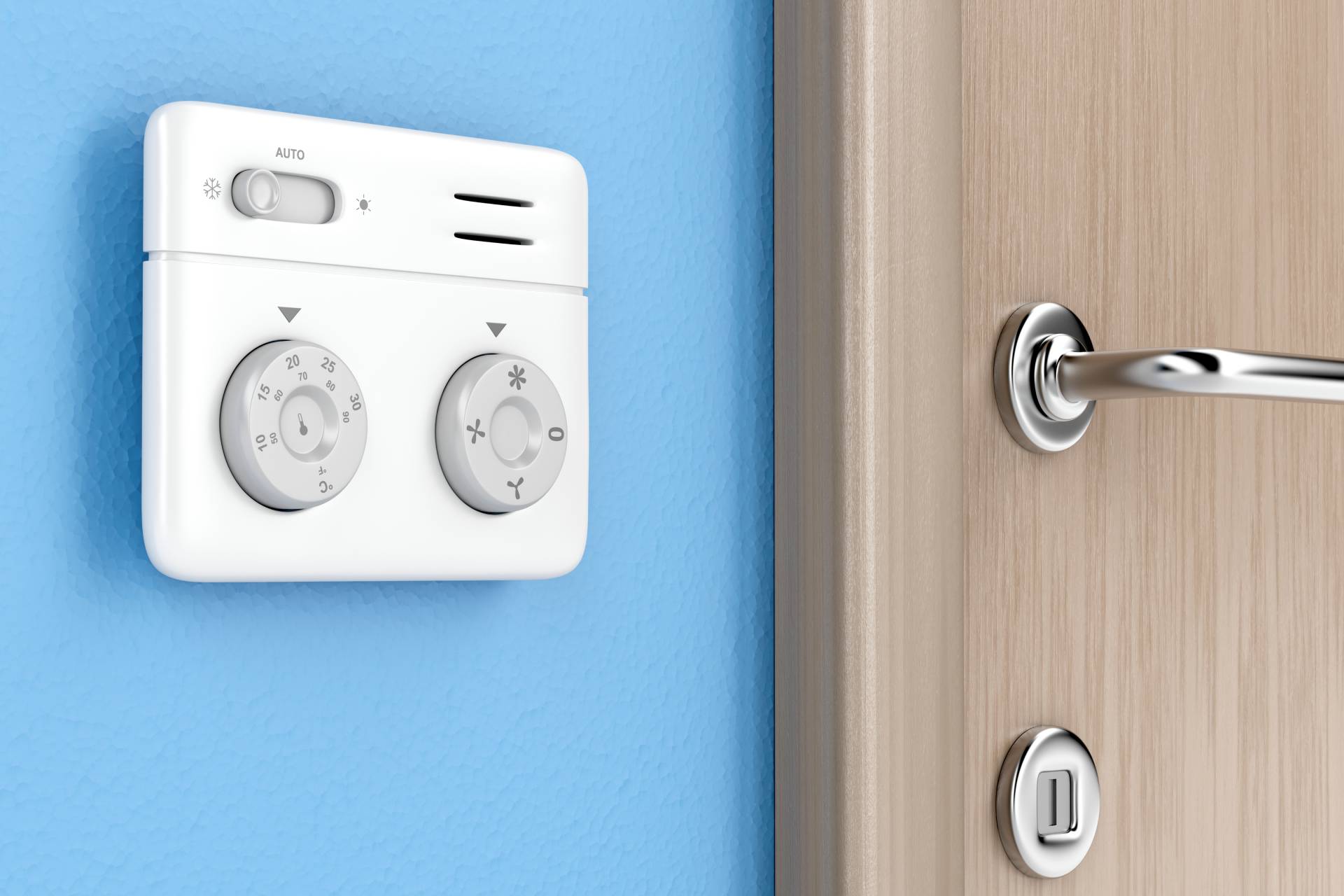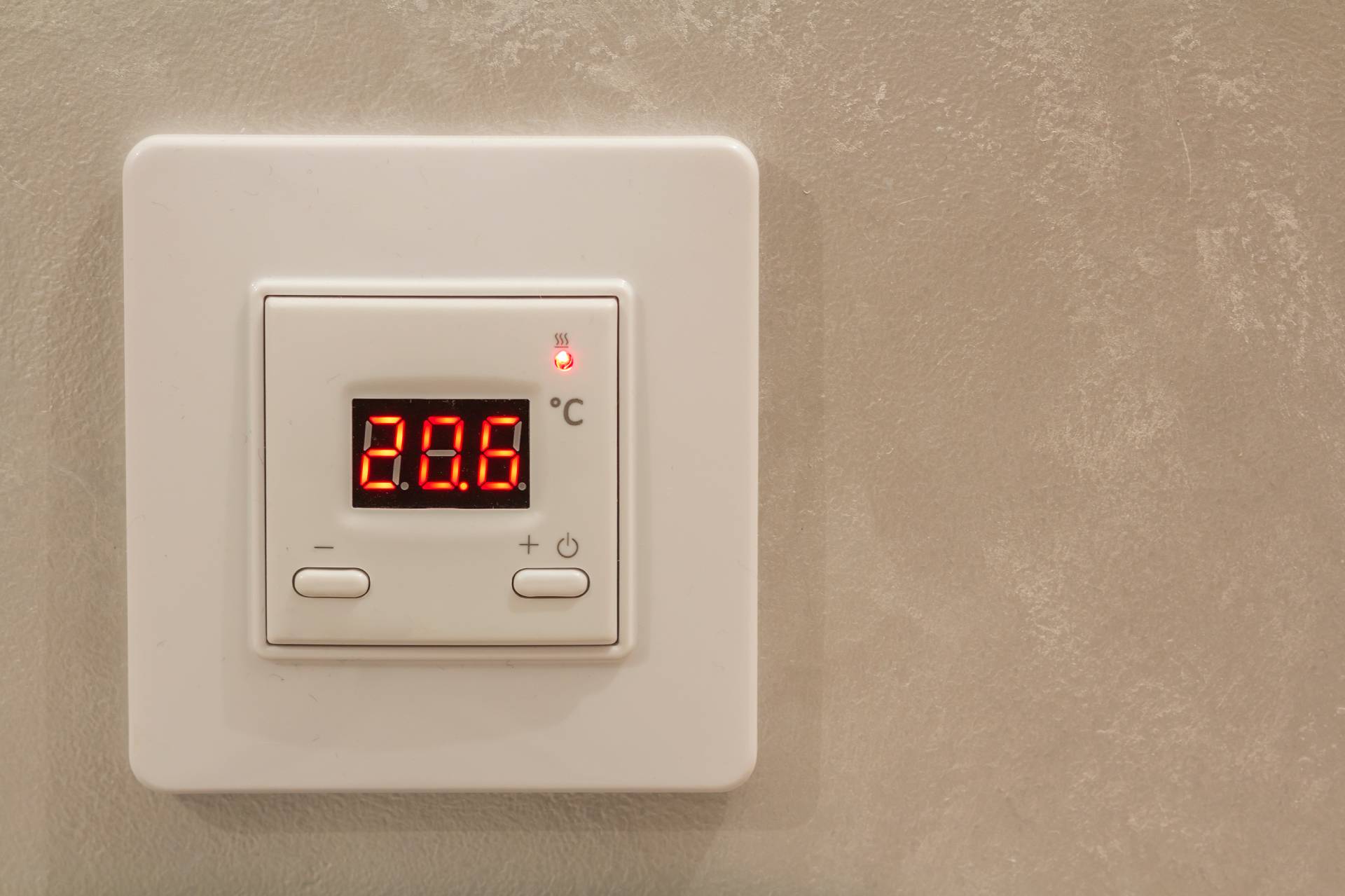A thermostat plays a vital role in controlling the temperature of your home, office, or car, providing comfort in all weather conditions. But how does a thermostat work? This small device has a significant impact on heating and cooling systems, managing when they turn on and off to maintain a set temperature. In this article, we’ll explore the function of thermostats, different types available, and why proper thermostat operation is essential for energy efficiency and comfort.
Understanding the Basic Function of a Thermostat
At its core, a thermostat is a temperature-sensitive switch. When you set a desired temperature, the thermostat monitors the ambient temperature and triggers the heating or cooling system when that temperature is reached. It functions as the brain of your HVAC system, instructing it to either warm up or cool down a space. So, how does a thermostat work? It senses temperature changes through various mechanisms and sends signals to the heating or cooling equipment to adjust the indoor climate.
Types of Thermostats and How They Work
Thermostats come in various forms, each with distinct technology and features. The most common types include:
- Mechanical Thermostats: These older models typically use bi-metallic strips or gas-filled bellows. The strip expands or contracts as the temperature changes, causing a physical movement that completes or breaks the electrical circuit, turning the heating or cooling system on or off.
- Digital Thermostats: These are more modern and accurate. A digital thermostat uses electronic sensors to detect temperature changes. It displays the current and desired temperatures on an LCD screen, allowing users to make precise adjustments. How does a thermostat work in this context? It utilizes microprocessors to send commands to your HVAC system based on temperature fluctuations.
- Programmable Thermostats: A programmable thermostat allows users to set different temperatures for various times of the day. These devices help save energy by automatically lowering or raising the temperature when you’re away or asleep. This option can improve energy efficiency while maintaining comfort.
- Smart Thermostats: The latest innovation in thermostat technology, smart thermostats can be controlled via smartphones or connected home systems like Google Home or Alexa. They learn your habits and adjust the temperature accordingly, optimizing energy use.
Thermostats and HVAC Systems
How does a thermostat work with an HVAC system? Whether it’s a furnace, air conditioner, or heat pump, the thermostat manages the system’s cycling based on the indoor temperature. In a heating system, when the temperature drops below the set point, the thermostat signals the furnace to generate heat. In a cooling system, when the temperature rises above the set point, the thermostat instructs the air conditioner to lower the temperature. This constant communication ensures that the HVAC system operates efficiently without unnecessary energy use.
How a Thermostat Saves Energy
Energy efficiency is a significant concern for homeowners, and a thermostat plays a crucial role in managing energy consumption. By maintaining a set temperature, the thermostat prevents the system from running continuously, which would waste energy. How does a thermostat work to save energy? By only activating heating or cooling when needed, thermostats ensure that your system operates within optimal limits. Programmable and smart thermostats further enhance energy savings by adjusting temperatures during non-peak hours.

Common Thermostat Issues and How to Fix Them
Even though thermostats are simple in their function, they can occasionally malfunction. Here are some common problems:
- Inaccurate Temperature Readings: This issue can stem from incorrect placement, such as installing the thermostat near windows, doors, or vents. How does a thermostat work best? When placed in an area that accurately reflects the room’s temperature without external influences like direct sunlight or drafts.
- Unresponsive Thermostat: If your thermostat isn’t triggering your HVAC system, the problem could be dead batteries, loose wiring, or internal component failure.
- Frequent Short Cycling: If your system frequently turns on and off, it could indicate that your thermostat is malfunctioning or improperly calibrated.
Addressing these issues quickly ensures that your thermostat works effectively and your HVAC system runs efficiently.
Thermostat Placement: Why It Matters
Placement is a critical factor in a thermostat’s effectiveness. So, how does a thermostat work in relation to where it’s located? A thermostat should be placed on an interior wall, away from direct sunlight, drafts, and any sources of heat, such as lamps or kitchen appliances. The ideal height for a thermostat is approximately 52 to 60 inches from the floor. Placing it in a neutral location ensures that it reads the average room temperature, not influenced by outside elements.
Choosing the Right Thermostat for Your Home
When selecting a thermostat, consider your lifestyle, budget, and the type of HVAC system you have. A programmable or smart thermostat is ideal for those seeking energy efficiency and convenience. Mechanical thermostats may still be suitable for older systems but lack the precision and functionality of newer models. Consulting an HVAC professional can help you determine which thermostat best suits your needs.
When to Replace Your Thermostat
Like any device, thermostats have a lifespan. Over time, they can lose accuracy, leading to inefficiencies in your heating and cooling system. So, how does a thermostat work over time? Wear and tear on internal components can cause delays in responses, inaccurate readings, or even complete failure. Replacing your thermostat every 10-15 years is recommended to ensure optimal performance and energy savings. If you notice your energy bills rising without an increase in usage, it may be time to consider a new thermostat.

The Future of Thermostats
The future of thermostat technology looks promising with the rise of smart homes. Integration with other devices allows users to control not only the temperature but also lighting, security systems, and even household appliances. How does a thermostat work in this connected future? Advanced algorithms and machine learning enable smart thermostats to predict your preferences, adapt to weather conditions, and work with renewable energy sources. These innovations promise even greater energy efficiency and comfort in the years to come.
Trust Redlands & Henry Bush Plumbing, Heating and Air Conditioning for Your Thermostat Needs
A well-functioning thermostat is essential for your HVAC system to provide comfort and efficiency. If you’re experiencing issues or are interested in upgrading to a more modern thermostat, contact Redlands & Henry Bush Plumbing, Heating and Air Conditioning. Our expert team can help you select and install the right thermostat for your home, ensuring optimal performance. Don’t let a malfunctioning thermostat compromise your comfort—get in touch with us today!





